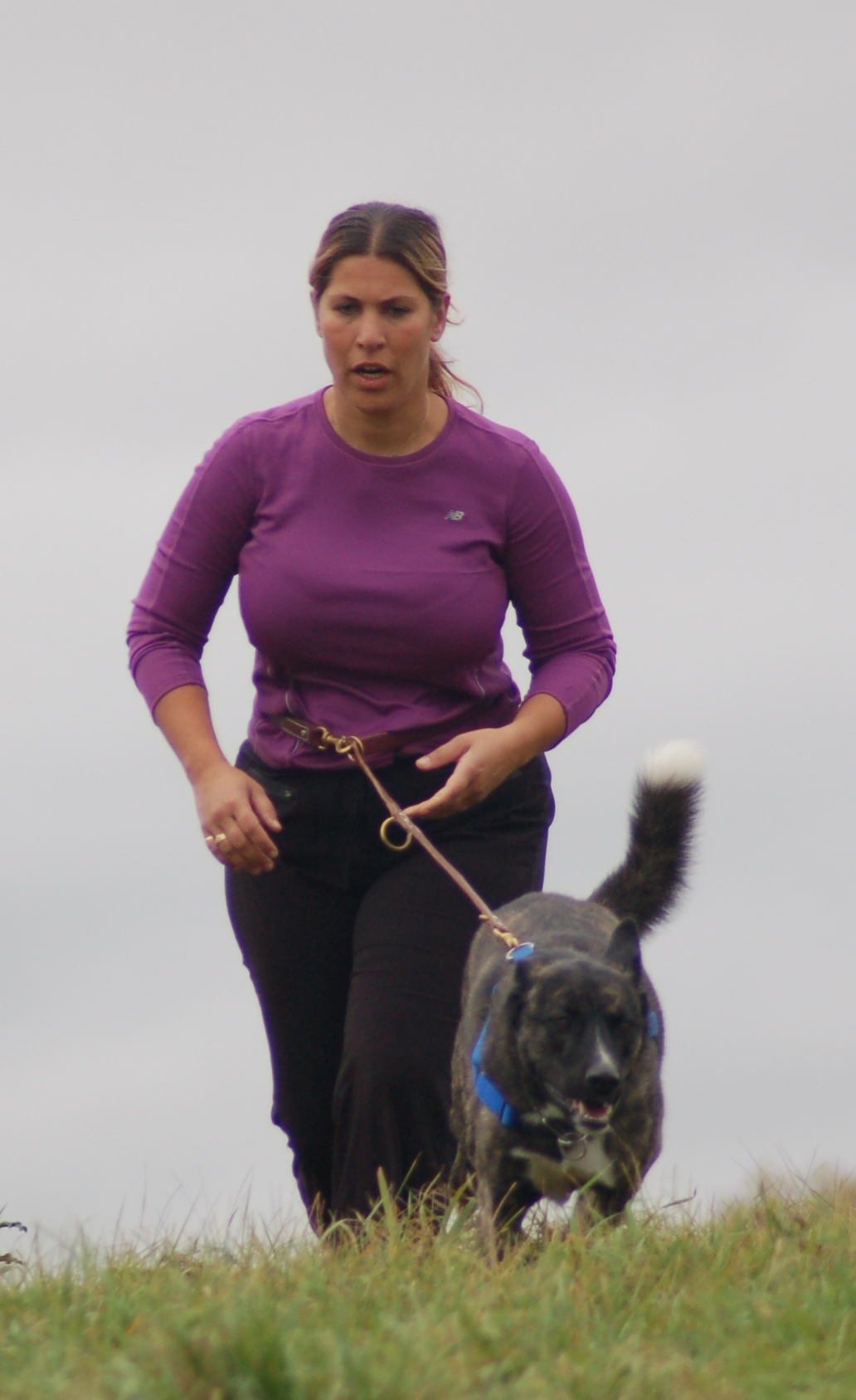You may remember my slapstick introduction to jogging with poodles recently, when Cliff and Tate got tied in knots and totally confused about what they should be doing (see Fuzzy habits). So, not wanting to set a bad example for anyone seriously interested in running with their dogs, I’ve put together some advice from experts in the field.
First, you’ve got to pick the right dog as a running partner. With few exceptions, this excludes dogs less than 10kg, those with flat faces like bulldogs, and giant breeds such as newfoundlands or great danes. As mentioned, there are exceptions and I’ve heard of smallish collies or terriers and an occasional dane that did very well with regular 3 to 5 mile runs, but the best jogging dog is between 40 and 75 lbs, with a short haircoat. It’s important that, whatever the breed, the dog be healthy and fit. A physical check-up and slow introduction to training is just as crucial when you’ve got four legs as it is for people.
There are few good studies on the effects of vigorous exercise on orthopaedic development in puppies, but many veterinary specialists feel running too early increases the risk and severity of such diseases as elbow and hip dysplasia. I see no reason not to jog with pups as young as five or six months, just limit the activity to about 15 minutes and stick to soft surfaces without a lot of elevation changes. Add five minutes p

er month of age and don’t get out on concrete or asphalt until all of the dog’s growth plates have closed, meaning the bones have stopped lengthening. This generally happens by one year of age.
On really hot days, don’t take your dog out running. We can sweat off buckets of heat, but the canine anatomy really only allows heat exchange through panting (see Heatstroke Fuzzy). You will also need to provide water regularly, just as you do for yourself. Doubtless there are harnesses with water bottle pouches available for dogs and collapsible bowls can be used if needed. Dogs can be taught to drink from a bottle.
In terms of additional equipment, all you really need is a harness or head halter and shortish leash. Traditional neck collars can cause pain and damage if the dog stops suddenly. More gear for running with dogs is becoming available all the time as interest in the activity grows.
The largely European sport of cross-country running with canines, “Canicross” (https://en.wikipedia.org/wiki/Canicross ) is starting to take off in Canada. There is even talk of a local Canicross club opening in Trenton. Interest in the sport has sparked the development of harness and lead sets that allow runners to wear a waist belt, connecting them via a bungee-type leash to their dogs’ harnesses (Harness example). This solves the difficulty of maintaining good running form while holding a leash.
It also brings up another issue entirely – running with a dog can really mess up workouts. If you are a serious runner, training for competitive events, take the dog out on “easy” rest days, so you don’t get frustrated and ask too much. One of the difficult parts about dog jogging is that your pace may not match your canine partner’s. Don’t insist that he runs faster than he would normally. It’s natural for a dog to run, then walk, speeding up, slowing down and resting intermittently. Sniff breaks are commonplace. When we ask them to just keep going, they’ll often do it even if it doesn’t feel very good. Focus on a good pace for your dog, watch his behaviour and stop for rests when it seems wise. This is especially important when starting out. It’s no time to be worried about your 5K time.
If injuries such as strains from muscle overuse or pad damage occur, have the dog checked over by your veterinarian and expect that, at a minimum, rest time will be needed. Your dog may also be referred for physiotherapy. All this will sound pretty familiar to anyone who has logged many miles jogging. Dogs are not immune to overuse injuries.
I don’t have a lot to suggest for another big concern when jogging with (or without) dogs – attacks by other dogs. Anyone who walks, jogs or bikes can run into the problem of free-roaming, aggressive dogs. Sometimes having another dog with you helps, but usually it just makes the situation worse. I’ve investigated at length the deterrents available and there’s not a really good one.
There is a citronella spray available in the states that my American colleagues like (Spray Shield), but I have not found a Canadian distributor and shipping from the U.S. seems to cost about three times the $10 price tag for the item. Citronella is probably only useful in cases of mild aggression. Pepper spray is available in Canada as a “bear repellent” and can cause severe pain. It comes in an unwieldy can and can be tricky to use in the wind, however, it might stop a vicious attack. Air horns are another possible solution. Probably the best approach is to find a route free of potential menaces.
Finally, here are some interesting links on the topic of dog jogging:
Jogadog.com (Dogs can be trained to run on treadmills. I’ll leave you to come up with reasons why you’d want to try it. Unfortunately, treadmills for people are only suitable for small breed dogs because they cause a shortened stride in larger animals. See the link to be amazed at what’s available.
Dr. Fiona Gilchrist
Hillcrest Animal Hospital
August, 2011




